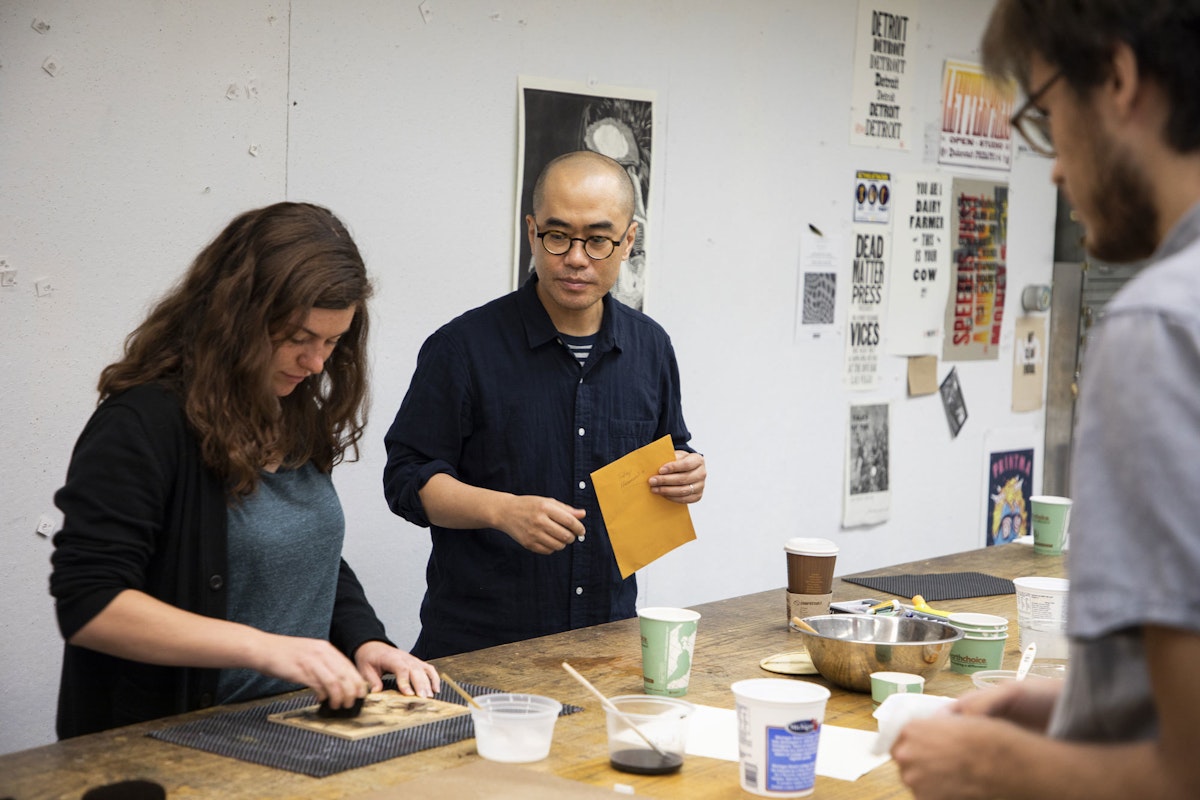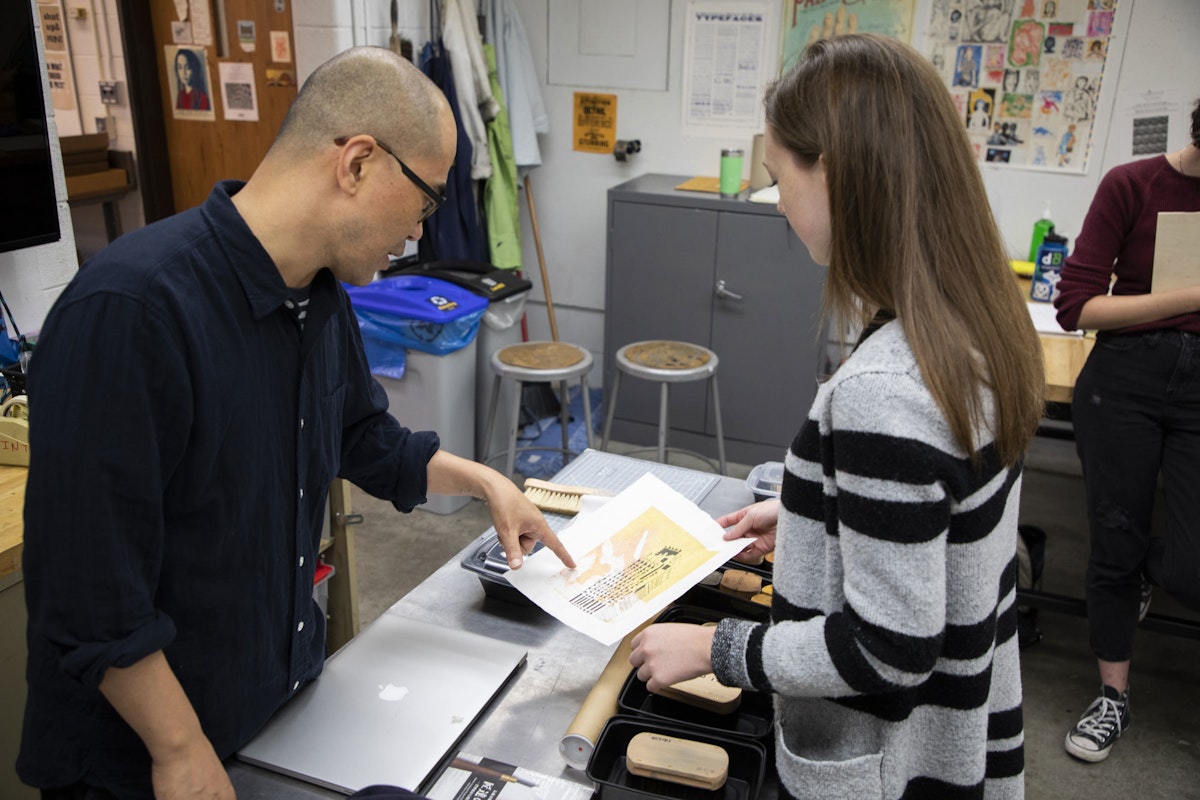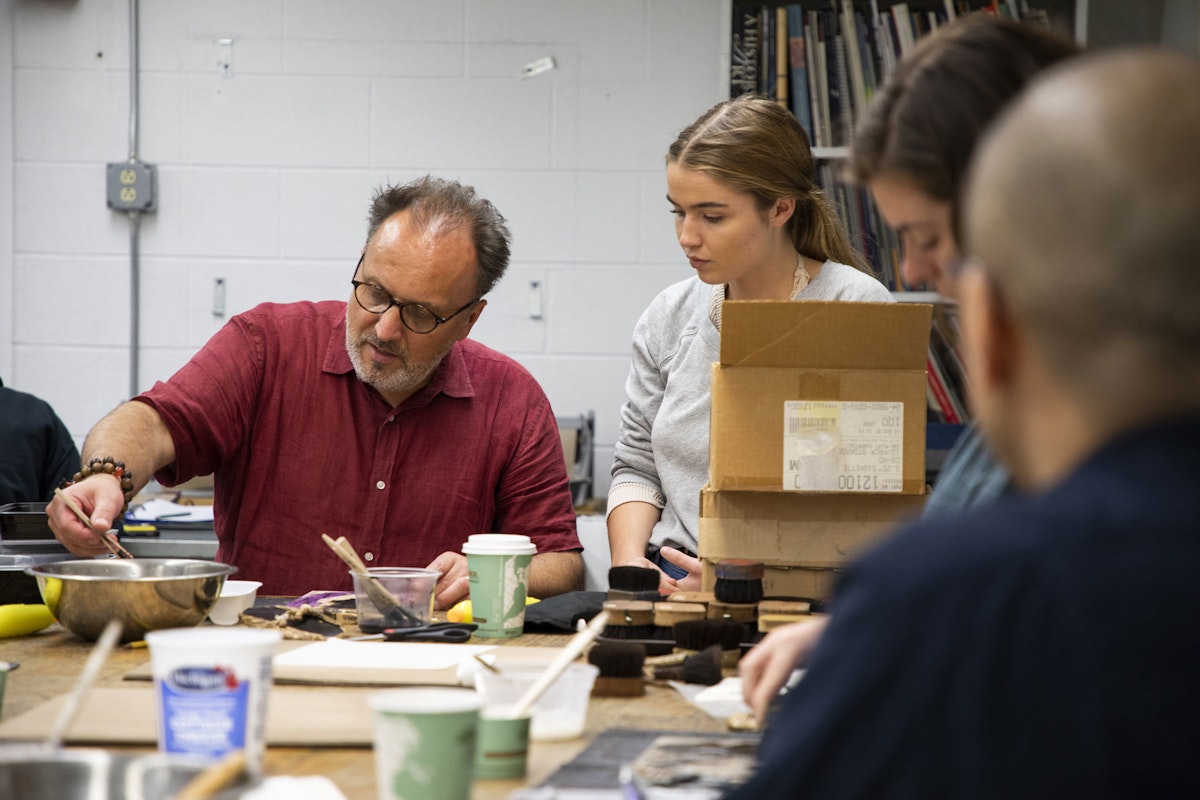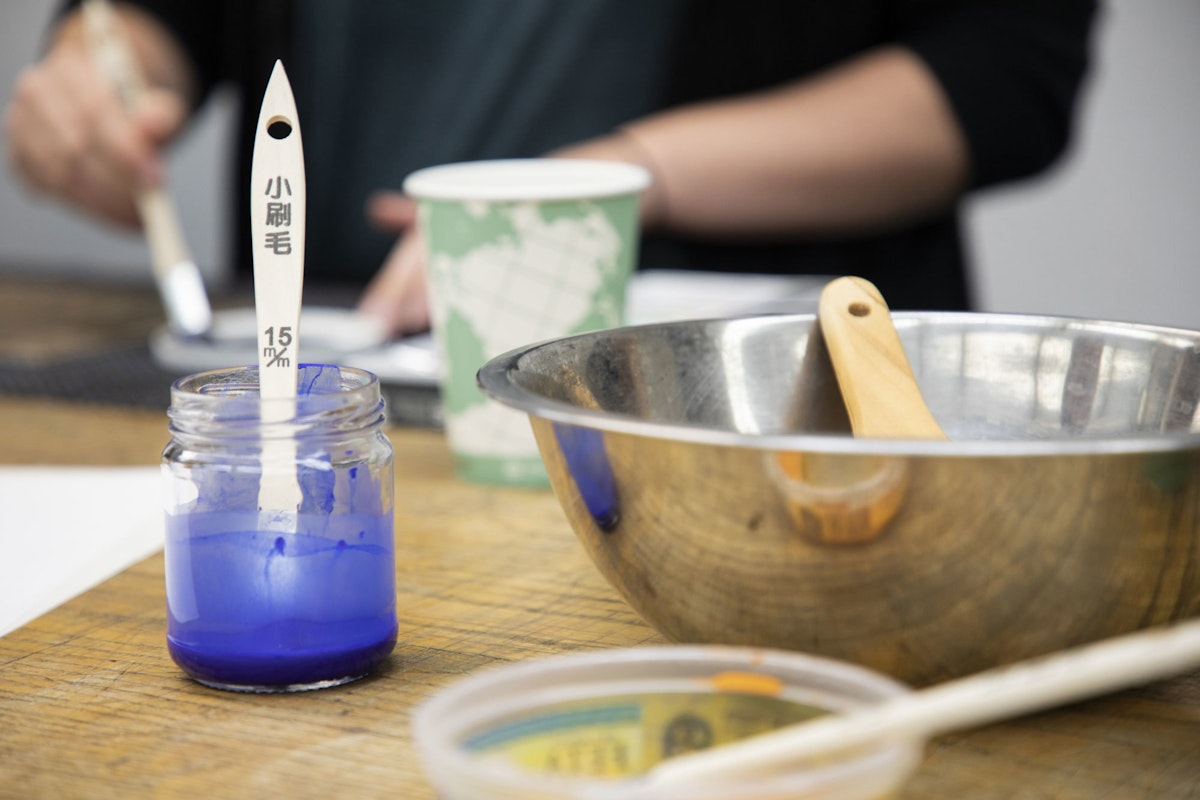Takuji Hamanaka Visits Stamps School
Professor Endi Poskovic hosted Roman J. Witt visiting artist Takuji Hamanaka for a three-day residency in the Print Media Studio at the Stamps School of Art & Design from September 24-26, 2018.
During the course of the residency, Hamanaka presented on his print collages on gampi, delivered a lecture, and lead a mokuhanga woodblock printing workshop.
Born in Hokkaido, Japan, Takuji Hamanaka studied at the Adachi Institute of Woodcut Prints in Tokyo where he practiced the traditional Japanese woodblock printing method “mokuhanga” used to produce Ukiyo-e pictures of the floating world. Using delicate Japanese paper “gampi,” and combining mokuhanga woodblock print making with collage, Hamanaka explores themes of pattern, restraint, and perceived movement within the two-dimensional sphere of washi and printed image.

According to Poskovic, “Hamanaka transcends the printmaking medium beyond technical investigation into a considerably more open realm of contemporary art-making in the present.”
Hamanaka’s work has been exhibited nationally and internationally at the International Print Center, New York; National Academy of Fine Arts, India; and the Royal Scottish Academy in Edinburgh, Scotland, among others. He is the recipient of a New York Foundation for the Arts Fellowship and KALA Art Institute Fellowship, as well as residencies at the MacDowell Colony and the Museum of Arts and Design, New York.

"It was especially valuable for our students to have Takuji Hamanaka visit Stamps School at this time in the semester when we are learning about water-based color relief printing,” said Poskovic. “The students benefited greatly from the proximity of working with Takuji in the studio making a print and his assisting them with their own work.”

"Takuji’s visit, lecture, and demonstration were extremely eye opening,” said Courtney Geist (BFA ‘19). “Through his demonstration, I found a gracefulness and ease that can come from countless years of mastering mokuhanga; something that is not easily achieved. Yet, I also discovered that one should never be afraid to challenge every notion of a traditional practice such as he did with his independent work. By pushing the medium to new limits with collage and layering gampi, the results are far from traditional but prove even stronger in their precision and technicality. From his visit, I could see two starkly different possibilities of what the process can produce, and that is an experience I would never have witnessed elsewhere.”
